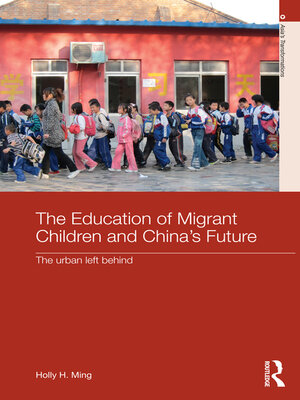The Education of Migrant Children and China's Future
ebook ∣ The Urban Left Behind · Routledge Studies in Asia's Transformations
By Holly H. Ming

Sign up to save your library
With an OverDrive account, you can save your favorite libraries for at-a-glance information about availability. Find out more about OverDrive accounts.
Find this title in Libby, the library reading app by OverDrive.



Search for a digital library with this title
Title found at these libraries:
| Library Name | Distance |
|---|---|
| Loading... |
There are more than 225 million rural-to-urban migrant workers, and some 20 million migrant children in Chinese cities. Because of policies related to the household registration (hukou) system, migrant students are not allowed a public high school education in the cities, so their urban education stops abruptly at the end of middle school. This book investigates the post-middle school education and labor market decisions of migrant students in Beijing and Shanghai, and provides a glimpse into the future of a crucial link in China's development. The stories of how these migrant students seek upward mobility and urban citizenship also reveal one of the most intricate structural inequalities in China today.
Based on quantitative data collected from middle schools in Beijing and Shanghai, and ethnographic data drawing on in-depth interviews with migrant children, their parents, and teachers, this book offers a portrait of the migration and educational experiences and prospects of second generation migrant youth in China today. It explores the urban experience of migrant students, contrasting it with that of local city youngsters, examining the migrant students' family backgrounds, family dynamics, neighborhood and school experience, and interaction with locals. It goes on to look at the migrant students' education and career aspirations, the structural obstacles preventing their fulfilment, and how migrant families respond to institutional constraints on educational opportunity. Finally, the book concludes with a discussion of policy implications and offers proposals for resolving the dilemmas of migrant youth.
This book will of great interest to students and scholars of Chinese studies, Asian education, migration and social development.







